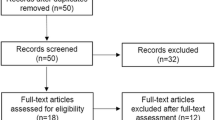Abstract
Background
Acute brain injury with strong surges of adrenergic outflow has resulted in takotsubo cardiomyopathy, but there are surprisingly few reports of takotsubo cardiomyopathy after intracranial hemorrhage, and none have been described from hemorrhage within the brainstem.
Results
We describe a patient with reverse and reversible cardiomyopathy following a hemorrhage in the lateral medulla oblongata. While it is limited in size, the location of the hemorrhage caused acute systolic failure with left ventricular ejection fraction of 27% and vasopressor requirement for cardiogenic shock and pulmonary edema. There was full recovery after 7 days.
Methods
Detailed case report.
Conclusion
Hemorrhage into medulla oblongata pressor centers may result in acute, reversible, stress-induced cardiomyopathy, affirming the adrenergic origin of this condition.



Similar content being viewed by others
References
Blanc C, Zeller M, Cottin Y, Daubail B, Vialatte AL, Giroud M, Bejot Y. Takotsubo cardiomyopathy following acute cerebral events. Eur Neurol. 2015;74:163–8.
Finsterer J, Wahbi K. CNS disease triggering Takotsubo stress cardiomyopathy. Int J Cardiol. 2014;177:322–9.
Finsterer J, Wahbi K. CNS-disease affecting the heart: brain–heart disorders. J Neurol Sci. 2014;345:8–14.
Nasr DM, Tomasini S, Prasad A, Rabinstein AA. Acute brain diseases as triggers for stress cardiomyopathy: clinical characteristics and outcomes. Neurocrit Care. 2017;27:356–61.
Yoshimura S, Toyoda K, Ohara T, Nagasawa H, Ohtani N, Kuwashiro T, Naritomi H, Minematsu K. Takotsubo cardiomyopathy in acute ischemic stroke. Ann Neurol. 2008;64:547–54.
Nagai M, Dote K, Kato M, Sasaki S, Oda N, Kagawa E, Nakano Y, Yamane A, Higashihara T, Miyauchi S, et al. The insular cortex and Takotsubo cardiomyopathy. Curr Pharm Des. 2017;23:879–88.
Pelliccia F, Kaski JC, Crea F, Camici PG. Pathophysiology of Takotsubo syndrome. Circulation. 2017;135:2426–41.
Abd TT, Hayek S, Cheng JW, Samuels OB, Wittstein IS, Lerakis S. Incidence and clinical characteristics of Takotsubo cardiomyopathy post-aneurysmal subarachnoid hemorrhage. Int J Cardiol. 2014;176:1362–4.
Stollberger C, Wegner C, Finsterer J. Seizure-associated Takotsubo cardiomyopathy. Epilepsia. 2011;52:e160–7.
Slivnjak V, Lakusic N, Richter D, Cerovec D. Stress cardiomyopathy with ST-segment elevation of the anterolateral location complicated by a secondary massive intracranial bleeding. Int J Cardiol. 2009;136:e63–5.
Rahimi AR, Katayama M, Mills J. Cerebral hemorrhage: precipitating event for a tako-tsubo-like cardiomyopathy? Clin Cardiol. 2008;31:275–80.
Bonnemeier H, Krauss T, Brunswig K, Burgdorf C. Severe headache and a broken heart. Europace. 2008;10:1115–6.
Deininger MH, Radicke D, Buttler J, Scheufler KM, Freiman T, Zentner JF. Takotsubo cardiomyopathy: reversible heart failure with favorable outcome in patients with intracerebral hemorrhage. Case report. J Neurosurg. 2006;105:465–7.
Shams Y, Lindroos M. Cerebellar haemorrhage triggered Takotsubo-like left ventricular dysfunction syndrome. Int J Cardiol. 2011;151:e85–7.
Tempaku A, Kanda T. Takotsubo-like myocardial dysfunction accompanied with cerebellar hemorrhage. Case Rep Neurol Med. 2012;2012:306171.
Shiromoto T, Shibazaki K, Kimura K, Sakai K. Case of cerebellar hemorrhage complicated with Takotsubo cardiomyopathy—usefulness of plasma brain natriutetic peptide measurement for the diagnosis. Rinsho Shinkeigaku. 2012;52:778–81.
Ennezat PV, Pesenti-Rossi D, Aubert JM, Rachenne V, Bauchart JJ, Auffray JL, Logeart D, Cohen-Solal A, Asseman P. Transient left ventricular basal dysfunction without coronary stenosis in acute cerebral disorders: a novel heart syndrome (inverted Takotsubo). Echocardiography. 2005;22:599–602.
Pierard S, Vinetti M, Hantson P. Inverted (Reverse) Takotsubo cardiomyopathy following cerebellar hemorrhage. Case Rep Cardiol. 2014;2014:781926.
Berganzo K, Ciordia R, Gomez-Esteban JC, Tijero B, Agundez M, Velasco F, Valle MA, Zarranz JJ. Takotsubo cardiomyopathy in a patient with bilateral lesions in the dorsal medulla. Clin Auton Res. 2011;21:65–7.
Venkatraman A, Bajaj NS, Khawaja A, Meador W. Cardiogenic shock from atypical Takotsubo cardiomyopathy attributed to acute disseminated encephalomyelitis lesion involving the medulla. Clin Auton Res. 2016;26:149–51.
Androdias G, Bernard E, Biotti D, Collongues N, Durand-Dubief F, Pique J, Sanchez I, Delmas C, Ninet J, Marignier R, et al. Multiple sclerosis broke my heart. Ann Neurol. 2017;81:754–8.
Ruggieri F, Cerri M, Beretta L. Infective rhomboencephalitis and inverted Takotsubo: neurogenic-stunned myocardium or myocarditis? Am J Emerg Med. 2014;32(191):e191–3.
Dande AS, Fisher LI, Warshofsky MK. Inverted Takotsubo cardiomyopathy. J Invasive Cardiol. 2011;23:E76–8.
Templin C, Ghadri JR, Diekmann J, Napp LC, Bataiosu DR, Jaguszewski M, Cammann VL, Sarcon A, Geyer V, Neumann CA, et al. Clinical features and outcomes of Takotsubo (stress) cardiomyopathy. N Engl J Med. 2015;373:929–38.
Kato K, Lyon AR, Ghadri JR, Templin C. Takotsubo syndrome: aetiology, presentation and treatment. Heart. 2017;103:1461–9.
Guyenet PG. The sympathetic control of blood pressure. Nat Rev Neurosci. 2006;7:335–46.
Ghali MGZ. The brainstem network controlling blood pressure: an important role for pressor sites in the caudal medulla and cervical spinal cord. J Hypertens. 2017;35:1938–47.
Author information
Authors and Affiliations
Corresponding author
Rights and permissions
About this article
Cite this article
Gobeske, K.T., Sarano, M.E., Fugate, J.E. et al. Medulla Oblongata Hemorrhage and Reverse Takotsubo Cardiomyopathy. Neurocrit Care 29, 508–511 (2018). https://doi.org/10.1007/s12028-017-0482-8
Published:
Issue Date:
DOI: https://doi.org/10.1007/s12028-017-0482-8




